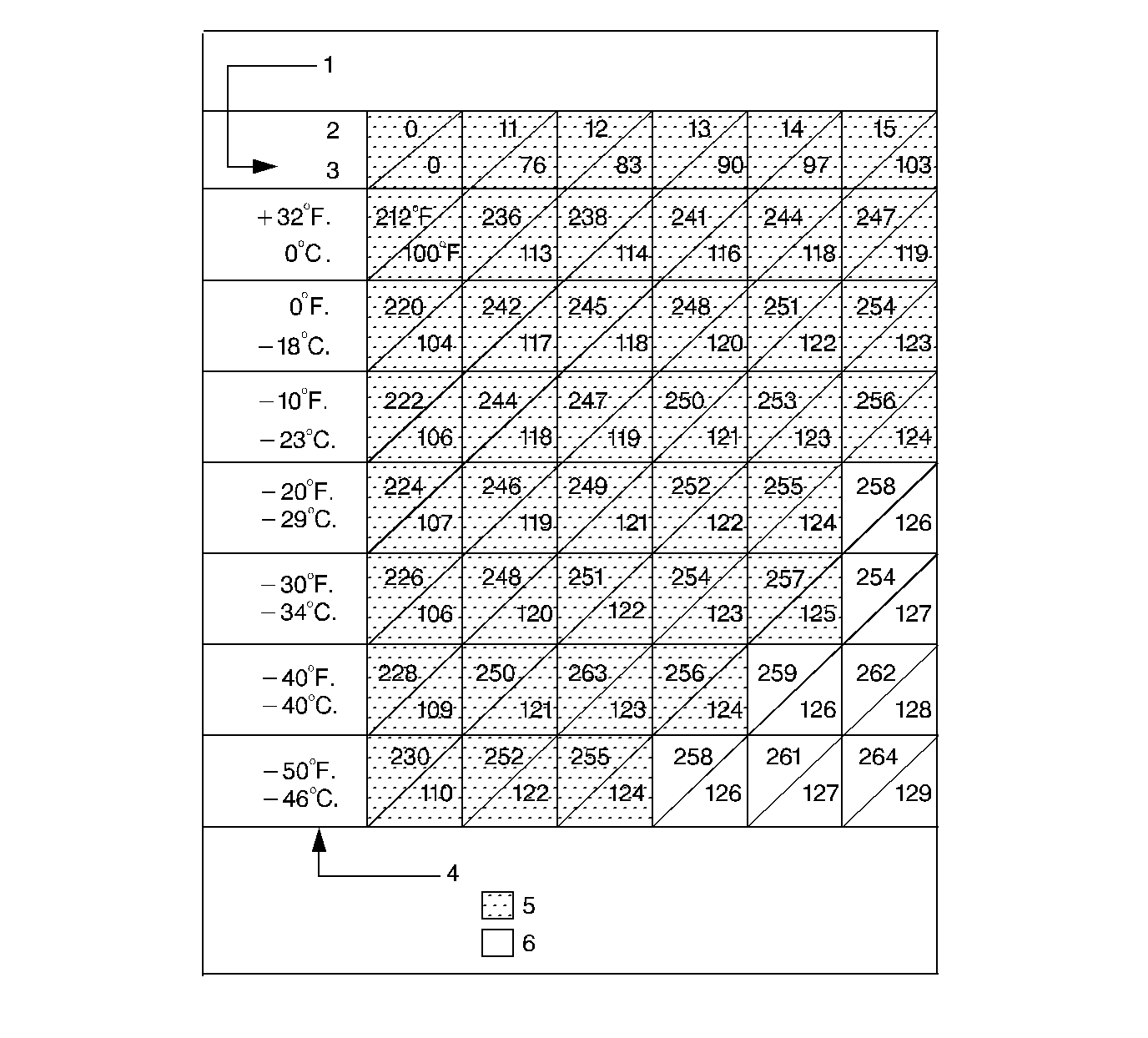Diagnostic Information and Checks
Caution: As long as there is pressure in the cooling system, the temperature
can be considerably higher than the boiling temperature of the solution in
the radiator without causing the solution to boil. Removal of the pressure
cap while the engine is hot and pressure is high will cause the solution
to boil instantaneously -- possibly with explosive force -- spewing
the solution over the engine, fenders and the person removing the cap.
If you diagnose a cooling fan electrical malfunction,
refer to Engine Controls.
The engine coolant temperature switch closes the circuit to the temperature
indicator light (TEMP) when the coolant reaches the temperature range on the
sending switch. The engine coolant temperature switch is not serviceable.
If the switch is faulty, replace the switch.
Coolant Pressure/Temperature Chart


